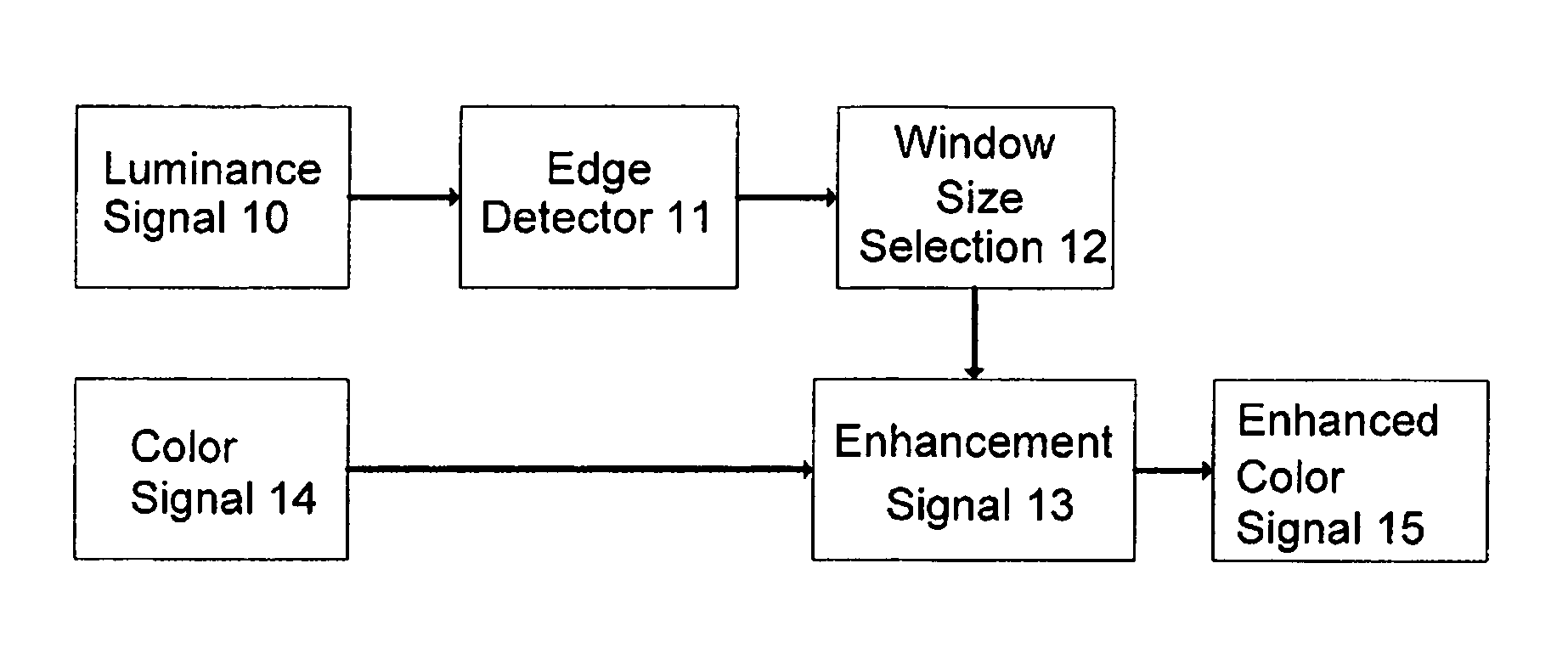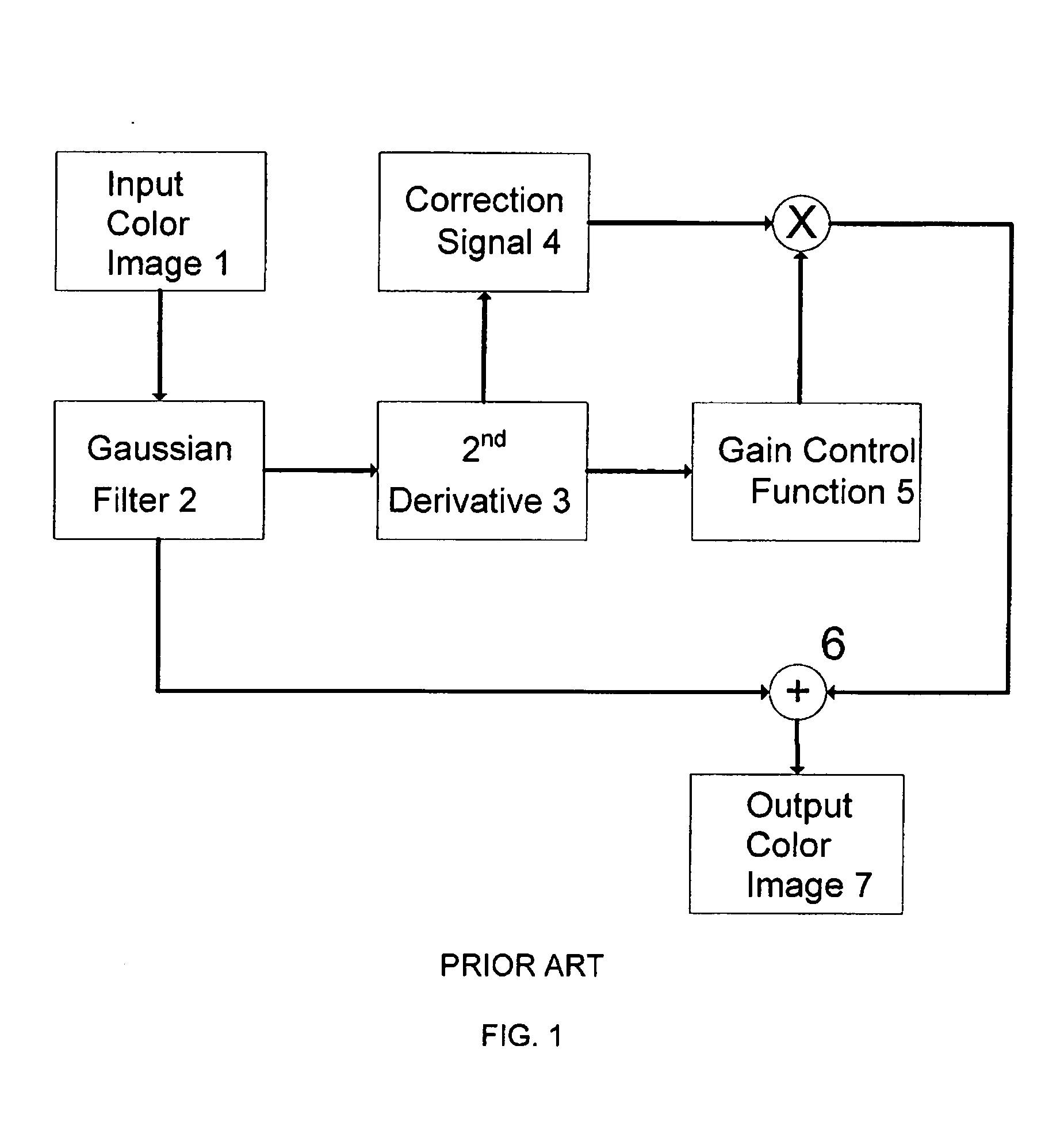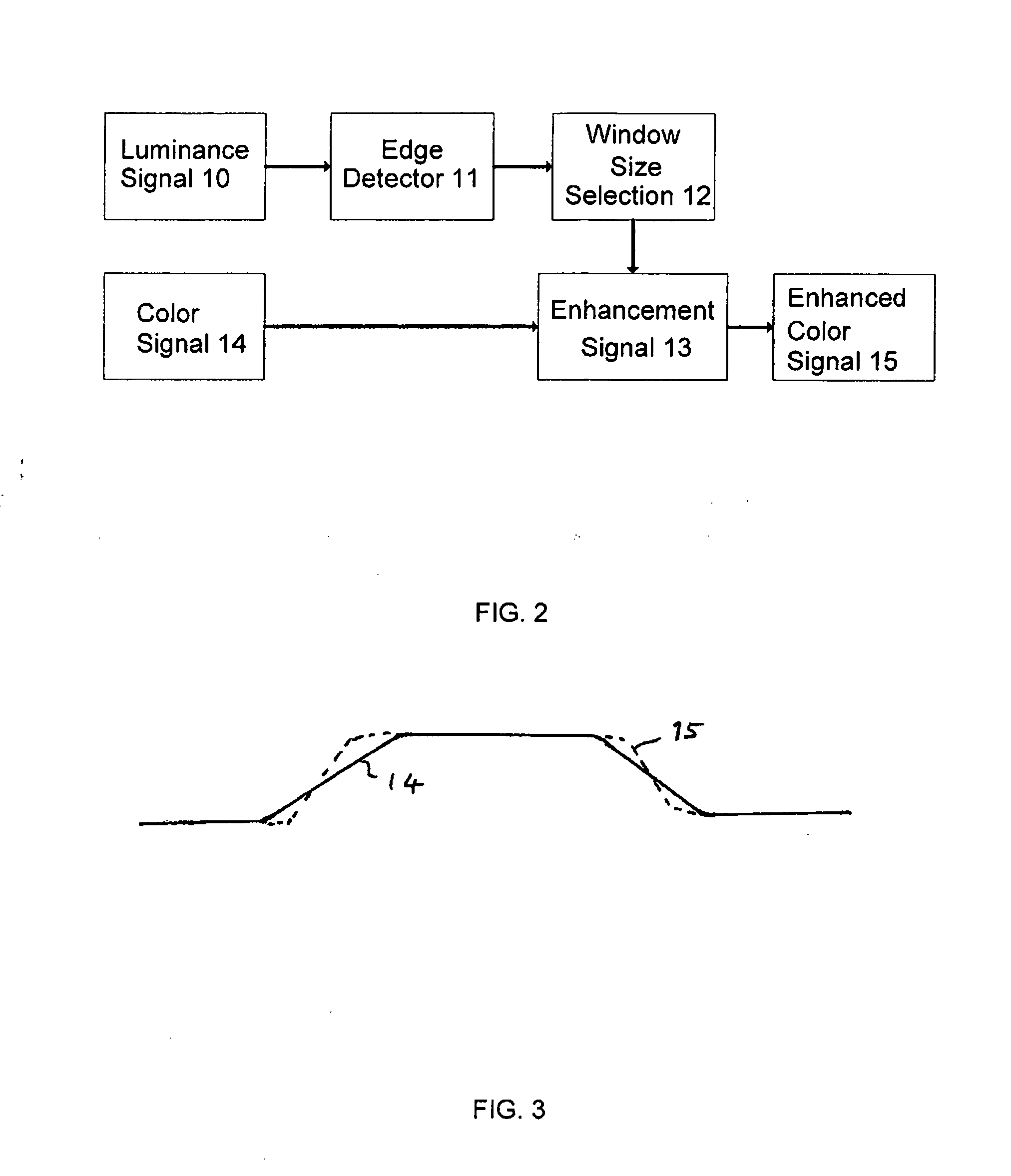Method and apparatus for adjusting a chrominance signal
a chrominance signal and adjusting technology, applied in the direction of electrical equipment, color television details, television systems, etc., can solve the problems of affecting the quality of chrominance, the difference was barely visible, and the corresponding shift in chrominance was slower, so as to improve the quality of colour enhancement, avoid amplification of noise in smooth regions, and improve the effect of colour enhancement quality
- Summary
- Abstract
- Description
- Claims
- Application Information
AI Technical Summary
Benefits of technology
Problems solved by technology
Method used
Image
Examples
Embodiment Construction
[0042] The main purpose of the preferred embodiment described herein is to align chrominance transition edges more closely with the corresponding luminance transition edges in a composite video signal so as to reduce or eliminate hue change artefacts which can otherwise arise. The most preferred embodiment adapts the weight of the transient improvement to local image features, which helps to prevent noise in smooth regions of the image being amplified.
[0043] As is known, composite colour video signals place low-pass filtered chrominance signals in the luminance signals line-by-line in a horizontal direction across rows of pixels. Thus, it is in practice only the horizontal chrominance transitions that are degraded and that are ideally improved. The vertical sampling frequency depends on the number of lines in a frame of the moving image, and no bandwidth reduction is applied to the chrominance signals in the vertical direction. Accordingly, the preferred embodiment operates prefere...
PUM
 Login to View More
Login to View More Abstract
Description
Claims
Application Information
 Login to View More
Login to View More - R&D
- Intellectual Property
- Life Sciences
- Materials
- Tech Scout
- Unparalleled Data Quality
- Higher Quality Content
- 60% Fewer Hallucinations
Browse by: Latest US Patents, China's latest patents, Technical Efficacy Thesaurus, Application Domain, Technology Topic, Popular Technical Reports.
© 2025 PatSnap. All rights reserved.Legal|Privacy policy|Modern Slavery Act Transparency Statement|Sitemap|About US| Contact US: help@patsnap.com



